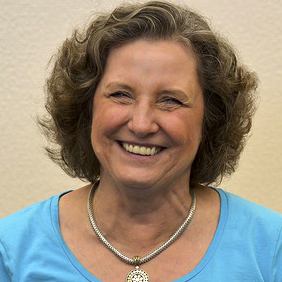Excerpt from the Spring 2024 issue of The Extension
 Many, if not most, Wright State retirees are “Baby Boomers,” defined as those who were born between 1946 and 1964, when the US population increased by almost 2.4 million. Throughout our lives society has scrambled to meet our needs. Anthropologists point out that soldiers summoned to war often leave a pregnant wife behind, and if he (it was mostly “he’s” until very recently) survived another baby often followed. Such was the pattern in my family. My sister, Sande, was born in1944 and I came along in 1948. There were at last three other such patterns in my graduating class (approximately 650) at Beavercreek. My best friend Wilma had a sister, Dixie, in my sister’s class (450). Wolfgang Mink had Gundula, and Mike Fisher had Jack. Beavercreek had to build schools to accommodate us. A second primary was added next to Main Elementary on Dayton-Xenia Road and later Ferguson Junior High came into being to make room for the continuing influx into the system.
Many, if not most, Wright State retirees are “Baby Boomers,” defined as those who were born between 1946 and 1964, when the US population increased by almost 2.4 million. Throughout our lives society has scrambled to meet our needs. Anthropologists point out that soldiers summoned to war often leave a pregnant wife behind, and if he (it was mostly “he’s” until very recently) survived another baby often followed. Such was the pattern in my family. My sister, Sande, was born in1944 and I came along in 1948. There were at last three other such patterns in my graduating class (approximately 650) at Beavercreek. My best friend Wilma had a sister, Dixie, in my sister’s class (450). Wolfgang Mink had Gundula, and Mike Fisher had Jack. Beavercreek had to build schools to accommodate us. A second primary was added next to Main Elementary on Dayton-Xenia Road and later Ferguson Junior High came into being to make room for the continuing influx into the system.
A strong argument can be made that Wright State was, in large part, created to serve this population. Gov. Jim Rhodes wanted a state university within driving distance of every Ohio high school graduate. Eager students flocked to enroll, and one building soon became four. We all know the rest of the story. For many years construction was a fact of life on campus and enrollment peaked at around 19,000 students in 2015. We held steady for a while, but lower birth rates, the pandemic and economic decline have taken their toll. Enrollment fell 30% from 2015 to 2020. The pandemic had something to do with this as did the continuing popularity of distance learning. Thankfully, 2023 brought a 2.2% enrollment increase in fall semester. Nevertheless, campus often feels sadly empty. Parking is no problem, classrooms go unused. It’s not that the university isn’t thriving, it’s just that it was built to accommodate a population that no longer exists.
Now we are stressing retirement systems. A Google search will pull up such articles as “Will Baby Boomers Bankrupt Social Security?” Current workers are a smaller cohort and boomers are living longer. Various solutions have been proposed, including having benefits pegged to individual contributions. Ohio’s state employee retirement systems, OPERS and STRS, are solvent and those benefits are secure. We are fortunate to have good managers at the state level. Our children and grandchildren will work longer to support us as we reach more advanced ages than previous generations. We owe them the economic prudence that will produce a nice inheritance someday and maybe a little sharing along the way. Many of them, as I can personally attest, have earned it several times over.


